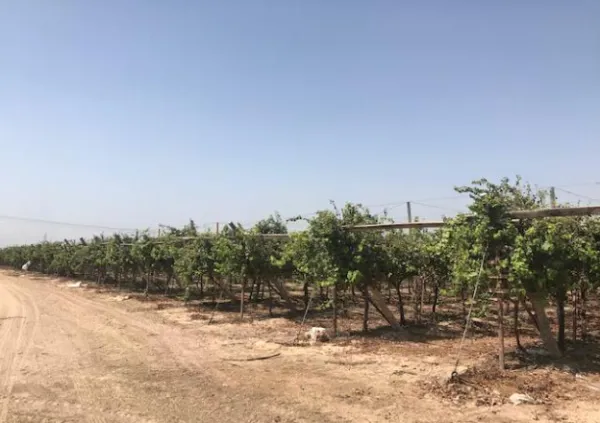Concerning yields, after citrus, grapes are one of the most important fruits grown in Egypt. Farmers cultivate grapes from Alexandria in the north to Aswan in the south. They produce both early and late-ripening grapes. These two factors result in the extended availability of grapes on the market from May to November.
Egyptian commercial grape production should amount to 1,42 megatons by 2020/2021. Exports in 2020/2021 could reach 170.000 tons. The European Union remains the main importer of Egyptian grapes. The United Kingdom was the most important export market in 2019. Egypt sent 23% of its exported grape there. Egypt is seeking access to new markets for grapes in Argentina and New Zealand.
 Grape farming in Beheira, one of Egypt's most important cultivation areas.
Grape farming in Beheira, one of Egypt's most important cultivation areas.
In Egypt, early grape harvesting begins in May and ends in September. Late varieties are harvested from the end of July until November. Thompson and Flame are seedless grapes. These remain popular in the EU market. However, grape growers are expanding to higher-value varieties. They want to supply other markets and meet evolving consumer tastes worldwide. The most popular of these other varieties are Early Superior, Superior, and Roomy.
Egyptian grape farmers claim grapes are one of the most expensive crops to cultivate. In Egypt, it costs more than €12.000 to start growing one hectare of grapes. That's excluding the land's cost. But, investing in the cultivation of high-value varieties can provide good returns, especially for growers targeting export markets. Export yields are worthwhile and significantly high.
Source: USDA
